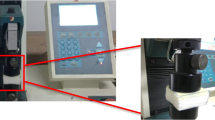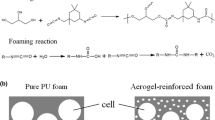Abstract
In this study, deproteinised natural rubber (DPNR) latex has been used to fabricate three prototypes of DPNR slow-recovery latex foam, which are latex foam mattress, shoe insoles and wheelchair cushion. The uniqueness of the DPNR slow-recovery latex foam is its ability to conform to the body shape according to both body weight and pressure, and thereafter to recover slowly from the impression made by the body. This ability increases surface contact area between the foam and the body, which helps to redistribute the body weight pressure over a larger area, thereby relieving pressure at stress points of the body. In this manner, DPNR slow-recovery latex foam ofers healthier blood circulation, extra comfort and prevents lower back pain. As such, DPNR slow-recovery latex foam will be effective to mitigate pressure ulcers caused by aggravated pressure between the skin and bony areas of the body such as beneath heels, hips, elbows and sacrum as well as buttock areas. It will also prevent development of foot ulcers associated with diabetic patients. Such uniqueness was confirmed using a modern pressure mapping system known as F-scan™ for shoe insoles and CONFORMat™ for wheelchair cushions from Tekscan® USA. The DPNR slow-recovery latex foam also exhibits a lower bounce effect compared to standard natural rubber (NR) latex foam, indicating its impact absorption capability which is important for application in athletic shoe insoles to mitigate potential injuries during sport activities such as running and landing. Besides having excellent mechanical properties and improved durability, DPNR slow-recovery latex foam is also a “greener” material due to its natural origin compared to conventional slow-recovery foam from man-made synthetic polymers.
Similar content being viewed by others
References
BEREZVAI, S. (2015) Visco-Hyperelastic Characterization of Polymeric Foams. PhD Thesis, Hungary: Budapest University of Technology and Economics.
POLYURETHANE FOAM ASSOCIATION (2016) Viscoelastic Memory Foam. In-Touch, 11, 1–7.
DHANAPAL, D. AND RAJA, K. (2016) PU Memory Foam for Application as Insole in Therapeutic Footwear for Patients with Diabetes. Int. J. Eng. Sci. Comput., 6, 7784–7785.
PRASAD RAJAN, K., DHILIPRAJ, D. B., MANIKANDAN, R. AND VEENA, N. R. (2011) Preparation of Molded Viscoelastic Polyurethane Foam for Pillow Applications. Cell. Polym., 30, 13–22.
LANDERS, R., HUBEL, R. AND BORGOGELLI, R. (2008) The Importance of Cell Structure for Viscoelastic Foams. PU Mag. Int., 40–48.
THILINA, W. W., RAVINDRA, S. G. AND UWE, R. (2017) Pressure Thresholds and Stifness on The Plantar Surface of The Human Foot. Ergonomics, 60, 985–996.
NICOL, K. AND RUSTEBERG, D. (1993) Pressure Distribution on Mattresses. J. Biomech., 26, 1479–1486.
BERGSTRAND, S. (2014) Preventing Pressure Ulcers by Assessment of The Microcirculation in Tissue Exposed to Pressure. PhD. Thesis, Sweden: Linköping University.
SURAJIT, B. AND MISHRA, R. K. (2015) Pressure Ulcers: Current Understanding and Newer Modalities of Treatment. Indian J. Plast. Surg., 48, 4–16.
SUZIE, C. (2010) Pressure Ulcer Prevention: Pressure, Shear, Friction and Microclimate in Context. A Consensus Document. Wounds International, 1–25.
RASPOVIC, A., LANDORF, K. B., GAZAREK, J. AND STARK, M. (2012) Reduction of Peak Plantar Pressure in People with Diabetes-Related Peripheral Neuropathy: An Evaluation of the DH Pressure Relief Shoe™. J. Foot Ankle Res., 5, 1–8.
BREM, H., MAGGI, J., NIERMAN, D., ROLNITZKY, L., BELL, D., RENNERT, R., GOLINKO, M., YAN, A., LYDER, C. AND VLADECK, B. (2010) High Cost of Stage IV Pressure Ulcers. Am. J. Surg., 200, 473–477.
URABE, Y., MAEDA, N., KATO, S., SHINOHARA, H. AND SASADAI, J. (2014) Effect of Shoe Insole for Prevention and Treatment of Lower Extremity Injuries. J. Phys. Fit. Sport. Med., 3, 385–398.
BONANNO, D. R., LANDORF, K. B., MUNTEANU, S. E., MURLEY, G. S. AND MENZ, H. B. (2017) Effectiveness of Foot Orthoses and Shock-Absorbing Insoles for The Prevention of Injury: A Systematic Review and Meta-Analysis. Br. J. Sports Med., 51, 86–96.
JESSICA, C. (2012) The Toxic Home. The Wellness Family, 1–2.
BLACKLEY, D. C. (1997) Polymer Latices Science and Technology. Vol. 2: Types of Latices. Polymer Latices. London: Chapman and Hall.
ARIYAWIRIYANAN, W., NUINU, J., SAE-HENG, K. AND KAWAHARA, S. (2013) The Mechanical Properties of Vulcanized Deproteinized Natural Rubber. Energy Procedia, 34,728–733.
YAMAMOTO, Y., NGHIA, P. T., KLINKLAI, W., SAITO, T. AND KAWAHARA, S. (2008) Removal of Proteins from Natural Rubber with Urea and Its Application to Continuous Processes. J. Appl. Polym. Sci., 107, 2329–2332.
ROSLIM, R., FATIMAH RUBAIZAH, M. R., MOK, K. L. AND AMIR HASHIM, M. Y. (2017) Composition and Method for Producing Natural Rubber Latex Memory Foam and Applications Thereof. Patent Application Number: 20177033435.
TINKER, A. J. AND JONES, K. P. (1998) Blends of Natural Rubber: Novel Techniques for Blending with Specialty Polymers. London: Chapman and Hall.
ASRUL, M., DAVIES, R. T. AND IKRAM, A. (2003) Visualisation of the Network Structure in Some Environmentally Degraded Natural Rubber Gloves. J. Rubb. Res., 6, 84–93.
ATTILA, K. AND BEREZVAI, S. (2015) Visco-hyperelastic Characterization of Polymeric Foams. 32nd Danubia Adria Symposium on Advanced in Experimental Mechanics, Slovakia.
SEIGLER, T. (2002) A Comparative Analysis of Air-Infated and Foam Seat Cushions for Truck Seats. MSc. Thesis, USA: Virginia Polytechnic Institute and State University.
ASIMUS, M. AND LI, P. (2011) Pressure Ulcers in Home Care Settings: Is It Overlooked? Wound Pract. Res., 19, 88–97.
BERGSTRAND, S. (2009) Tissue blood Flow Responses to External Pressure Using LDF and PPG: Testing A System Developed for Pressure Ulcer Research. MSc. Thesis, Sweden: Linköping University.
MC GINNIS, E. (2011) Heel Pressure Ulcers: A Study of Wound Healing. PhD Thesis, UK: University of Leeds.
ROSLIM, R., TAN, K. S. AND JEFRI, J. (2018) Study on Morphological Structures and Mechanical Properties of Natural Rubber Latex Films Prepared at Diferent Prevulcanisation and Drying Temperatures. J. Rubb. Res., 21, 1–16.
Author information
Authors and Affiliations
Corresponding author
Rights and permissions
About this article
Cite this article
Roslim, R., Mok, K.L., Fatimah Rubaizah, M.R. et al. Novel Deproteinised Natural Rubber Latex Slow-recovery Foam for Health Care and Therapeutic Foam Product Applications. J Rubber Res 21, 277–292 (2018). https://doi.org/10.1007/BF03449175
Received:
Accepted:
Published:
Issue Date:
DOI: https://doi.org/10.1007/BF03449175




